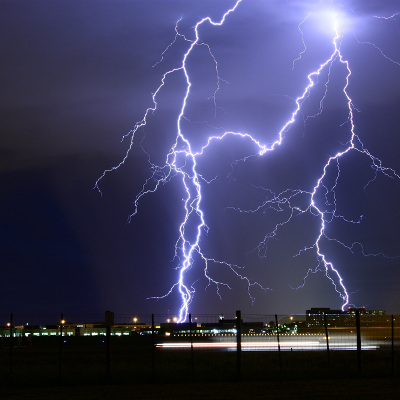Physical, Chemical & Biological Impact of Increased Lightning Strikes due to Climate Change

University of Bath: Martin Fullekrug
University of Bristol: Dudley Shallcross
Cardiff University: Daniel Mitchard (PI)
University of Exeter: Timothy Hill
Background
There are over a billion lightning strikes per year worldwide and this is predicted to rise by around 12% per degree increase in average global temperature. A single lightning strike can have a significant impact on the environment, initiating wildfires and altering ecosystems, disrupting power and transportation, producing large amounts of NOx and ozone, and creating large transient luminous events in the upper-atmosphere. The inherent unpredictability and high variance of natural lightning strikes makes it difficult to obtain reliable data, and it is largely unknown what physical, chemical and biological impact an increase will have on the global environment. There are only a handful of lightning research facilities worldwide and the wide range of cross-disciplinary expertise required to tackle this challenge within one consortium does not yet exist.
Project summary
The community held several meetings and a workshop to progress potential ideas and collaborations across the GW4 institutes. This resulted in collaborative experiments which generated pilot data for the lightning laboratory. The community are no longer active but there are strong links across GW4 collaborators which have resulted in shared research.





